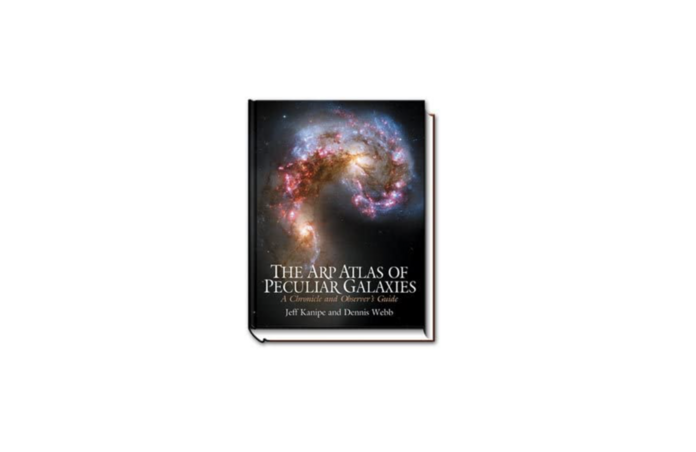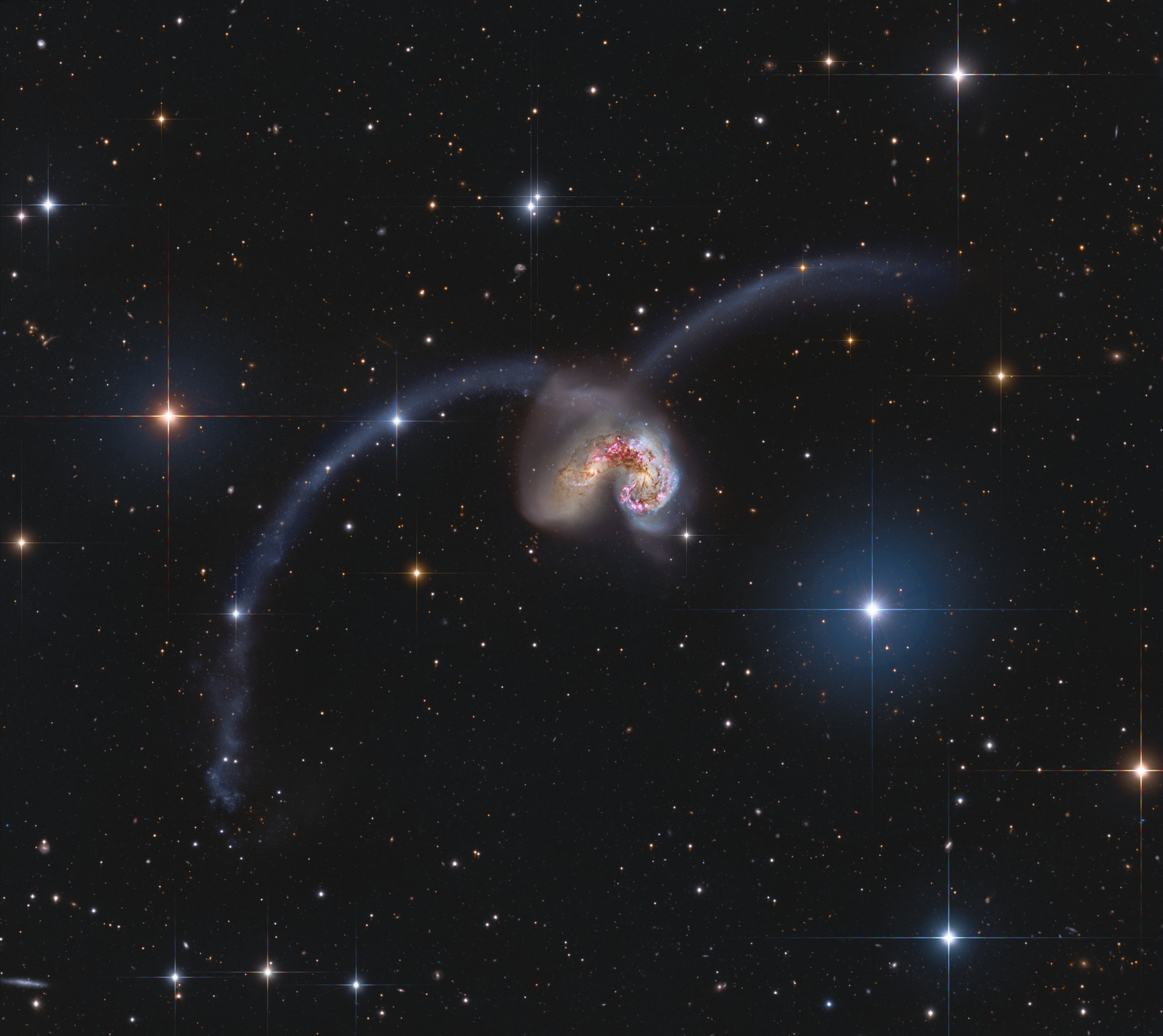The Arp Atlas of Peculiar Galaxies

As astro imagers, we’ve all targeted beautiful, symmetrical spiral galaxies to image and process. M31, the Andromeda Galaxy, M33 the great galaxy in Triangulum or M83, the Southern Pinwheel galaxy are all fine examples of galaxy imaging favorites. But there are a number of galaxies that are not as well known but no less compelling to image. These are the so called peculiar galaxies; galactic objects that are not well proportioned. They appear to be mutations of what we might normally think of as galaxies on the tuning fork spectrum developed by Edwin Hubble. Many of them appear to be the result of complex interactions or collisions between galaxies. We see these interactions at the moment of our existence; we do not know exactly what they looked like before they collided and what they will look like after the collision is completed.
Fortunately for us, there is a whole catalog of these kinds of targets to sink your pixels into.
The catalog that should be included in every amateur (and professional) imager’s library is The Arp Atlas of Peculiar Galaxies, A Chronicle and Observer’s Guide co-written by Jeff Kanipe and Dennis Webb. It is the comprehensive guide to Halton Arp’s, The Arp Atlas of Peculiar Galaxies that Dr Arp put together in 1966 and is the most detailed catalog ever constructed of interacting and merging galaxies. It was not the first time a catalog of these types of objects were made; Russian astronomer B.A. Vorontsov-Velyaminov published over 300 of these types of objects from the sky survey prints of the National Geographic Society - Palomar Observatory in 1959. Fritz Zwicky is also credited by Dr Arp fro doing a lot of work in this area, but Halton Arp’s catalog was the most thorough photographic investigation that had been done at that point and it took him 4 years to put all his work together and publish this catalog.
You can guess some of the objects that would be listed in his catalog: Messier 51, the Whirlpool galaxy is Arp #85 (my image).

Messier 82, the Cigar Galaxy is one of the most active star forming galaxies and is listed as Arp #337 (Hubble Image).

The Antennae Galaxies, NGC 4038 and NGC 4039 are Arp #244 (NASA image).

But there are many other objects that are not as well known (at least to me) and are just as compelling to try to image. I found an image taken by Adam Block of NGC 5394 and 5395 in Canes Venatici which is Arp #84. I’m going to have to build an Advanced Request to capture data for this object; it is quite beautiful and I’m sure quite the challenge to process.

Unfortunately, you may need to do an extensive search to find a copy of The Arp Atlas of Peculiar Galaxies, A Chronicle and Observer’s Guide. I got my copy some years ago from the Willmann-Bell website, but they recently went out of business and I have no idea where to get a copy. Even a quick search on Amazon yielded no results. If someone is able to find a a copy of it, please let everyone know!
As always, stay safe, get more people to turn their lights off at night and clear skies!
This blog post was originally published in our Telescope Live Community.
The Community represents Telescope Live's virtual living room, where people exchange ideas and questions around astrophotography and astronomy.
Join the conversation now to find out more about astrophotography and to improve your observation and post-processing skills!
